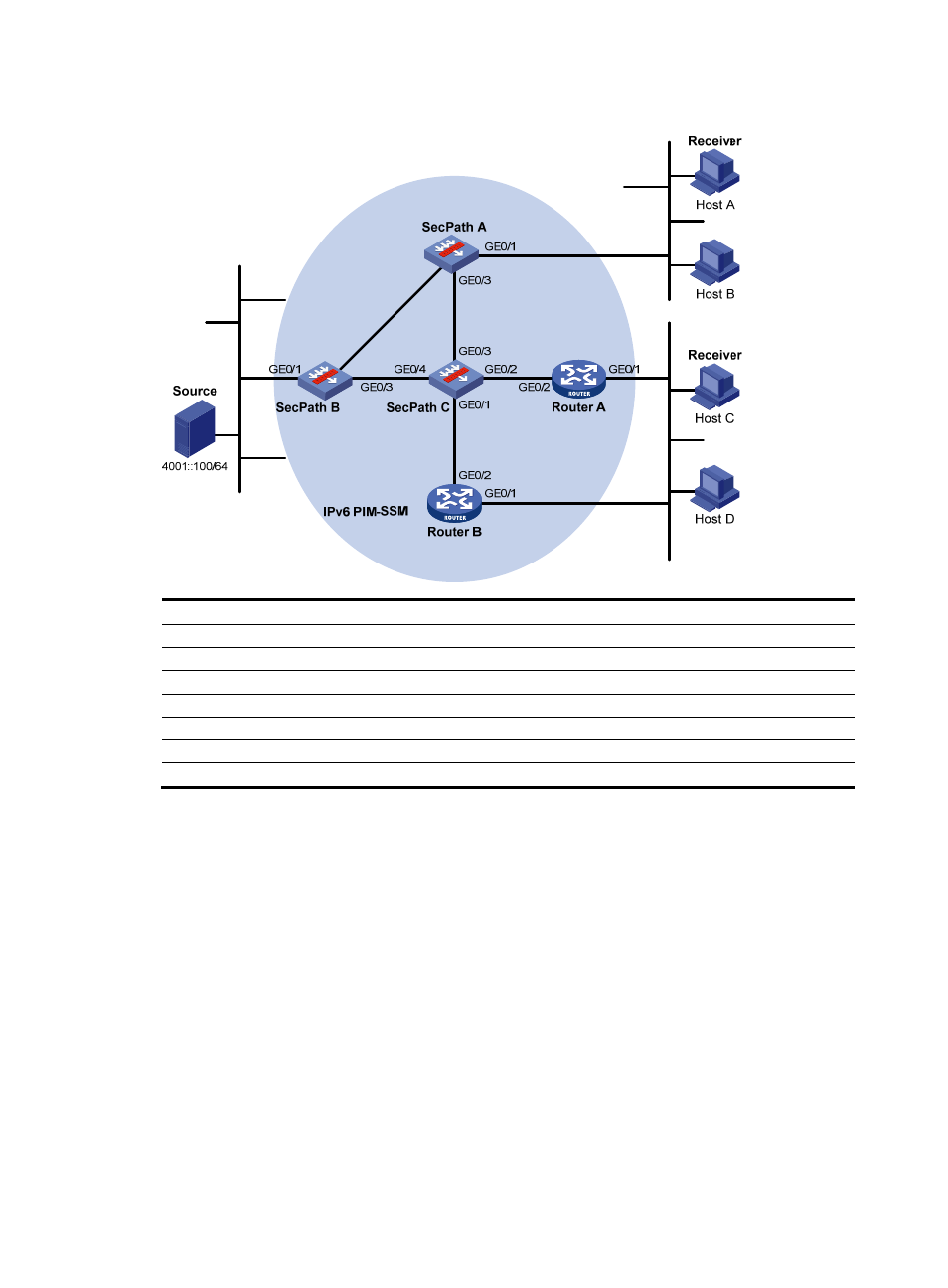Configuration procedure – H3C Technologies H3C SecPath F1000-E User Manual
Page 917

892
Figure 401 Network diagram
1
Device Interface
IPv6
address
Device
Interface IPv6
address
SecPath A
GE0/1
1001::1/64
SecPath B
GE0/1
4001::1/64
GE0/2
1002::1/64
GE0/2 1002::2/64
GE0/3
1003::1/64
GE0/3 4002::1/64
Router A
GE0/1
2001::1/64
SecPath C
GE0/1
3001::2/64
GE0/2
2002::1/64
GE0/2 2002::2/64
Router B
GE0/1
2001::2/64
GE0/3 1003::2/64
GE0/2
3001::1/64
GE0/4
4002::2/64
Configuration procedure
1.
Enable IPv6 forwarding and configure IPv6 addresses and IPv6 unicast routing:
Enable IPv6 forwarding on each SecPath and router, and configure the IPv6 address and prefix
length for each interface as per
. (Details not shown.)
Configure OSPFv3 on the routers and firewalls in the IPv6 PIM-SSM domain to make sure the
network-layer on the IPv6 PIM-SSM network is interoperable and the routing information among
the routers and firewalls can be dynamically updated. (Details not shown.)
2.
Enable IPv6 multicast routing, and enable IPv6 PIM-SM and MLD:
# Enable IPv6 multicast routing on SecPath A, and enable IPv6 PIM-SM on each interface, and run
MLDv2 on GigabitEthernet 0/1, which connects to N1.
<SecPathA> system-view
[SecPathA] multicast ipv6 routing-enable
[SecPathA] interface GigabitEthernet 0/1
[SecPathA-GigabitEthernet0/1] mld enable
[SecPathA-GigabitEthernet0/1] mld version 2
Ether
net
E
therne
t
Ether
net
N1
N2
GE0/2
GE0/2